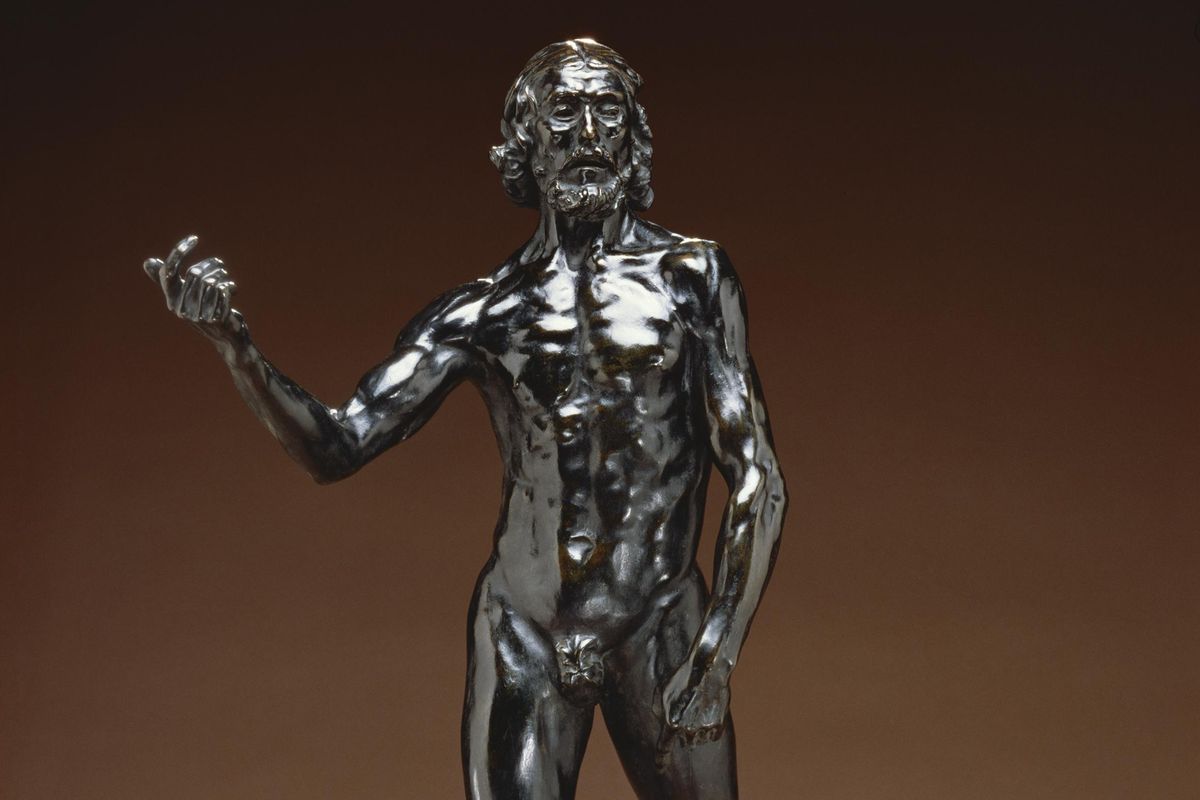Reliving Rodin: Jundt Art Museum opens exhibit of works by the father of modern sculpture

Gonzaga University’s Jundt Art Museum will be the first in the country to exhibit a new 22-piece retrospective, “Rodin: Truth Form Life / Selections from the Iris & B. Gerald Cantor Collections.”
“It’s a big-city exhibition at a very small museum,” said Jundt director and curator Paul Manoguerra. “We’re proud to be able to bring these 22 Rodin bronzes to Spokane, plus the three we already have in our collection.”
The new traveling show, secured by the Jundt with the help of a grant by Spokane Arts, is being offered by the Cantor Foundation as part of last year’s activities commemorating the 100th anniversary of Rodin’s death. Created especially for college museums and galleries, the exhibit is filled with “stars.”
Quintessential bronzes in the show include studies from The Burghers of Calais and the Gates of Hell as well as busts and preparations from famous monuments of two beloved French authors: Victor Hugo and Honoré de Balzac.
Visitors to “Rodin: Truth Form Life” will come face to face with the powerful emotions embedded in the works of the “father” of modern sculpture. Rodin’s focus on depicting human emotion and intimate moments upended the world of traditional sculpture in the late 19th and early 20th centuries. His innovative processes of repetition and multiplication broke boundaries. He is considered one of the greats, alongside Michelangelo. His influence continues today.
Rodin’s The Burghers of Calais is a prime example of a monument that shook the status quo. The piece also became one of Rodin’s most successful and memorable public art projects. It depicts an event that occurred during the Hundred Years’ War when Calais was under siege by England for nearly year. In 1346, the starving townspeople negotiated with Edward III to allow the citizens of Calais to surrender. But only if six town leaders agreed to sacrifice their own lives. Six citizens, or “burghers,” volunteered, not knowing that they would ultimately be shown mercy and survive.
In 1884, Rodin was among the artists who submitted proposals to the city of Calais to produce a statue commemorating this history. He was the only sculptor to propose depicting all six burghers instead of just the eldest hero.
Also, Rodin didn’t go for the poses that were obviously brave-looking or particularly heroic. He showed the men at the peak of their misery, when they came out to face certain death. Rather than bravely facing their executioners or serenely gazing at heaven, each man is looking in a different direction. Some stand bent or twisted in some way. The emotions on the six faces are a mixture of despair, starvation, confusion and resignation.
“Rodin has got all of this interest in the Renaissance and the ancient past and heroic virtue, and this sculpture does serve that purpose,” Manoguerra said. “But then he gives it that sort of modern emotional twist.”
Rodin’s demand to take the slightly larger than life statues down from the traditional pedestal also set him apart. He wanted the figures to be on the ground, so viewers could walk among them to better see their expressions and connect with their individual experiences.
The decision brings to mind another set of statues of brave men here in the United States, the Korean War Memorial in Washington, D.C. The sculptures are of a platoon on patrol. The soldiers are not in the midst of battle. They are quietly walking, low to the ground and looking in different directions. Dealing with their own emotions.
At the entry to the Jundt exhibit is a bust of French author Victor Hugo, who wrote such classics as “The Hunchback of Notre Dame” and “Les Miserables.” To put the bust in context, the exhibit has a photo of the finished statue of Hugo that was commissioned for the Pantheon.
Hugo is depicted partially nude and dressed in classical garb, sitting on a rock with a muse whispering in his ear. The writer holds his ear to hear the muse better, his whole body straining to listen.
“He’s meant to be a hero of the French nation,” Manoguerra said. “Here Rodin takes a modern character and presents him as an ancient.”
The famous Rodin statue The Thinker appears in another photo on display at the exhibition, of the monumental Gates of Hell. The theme for the gates, which were never cast during the sculptor’s lifetime, was taken from Dante’s inferno. The Thinker was originally conceived as the poet Dante himself.
Several bronze casts from studies for the gates are part of the Jundt exhibit. They include hand studies, fingers convulsed anxiously, muscles tensed with emotion or pain.
To enhance the 25-piece show, the Jundt has dipped into its permanent collection of prints by European artists of the same period. On the walls outside the exhibit hall, in the Arcade Gallery, are hung works by Chagall, Picasso, Toulouse-Lautrec, Manet, Pisarro, Daumier and Morisot, to name a few.
“It made sense to pull out our great works on paper collection that connect to this exhibit,” Manoguerra said. “From the late 1860s to the beginning of the 20th century, when Rodin was active, Paris was the center of the art world. Whether you were American, French, British, German, or Russian, if you were an artist, you went to Paris.”
The quickest way to take a stroll through the streets of Paris this fall is to head to the Jundt Art Museum. The exhibit opens to the this Friday with a reception from 4 to 7 p.m. The exhibition continues, free to the public, until Jan. 5.